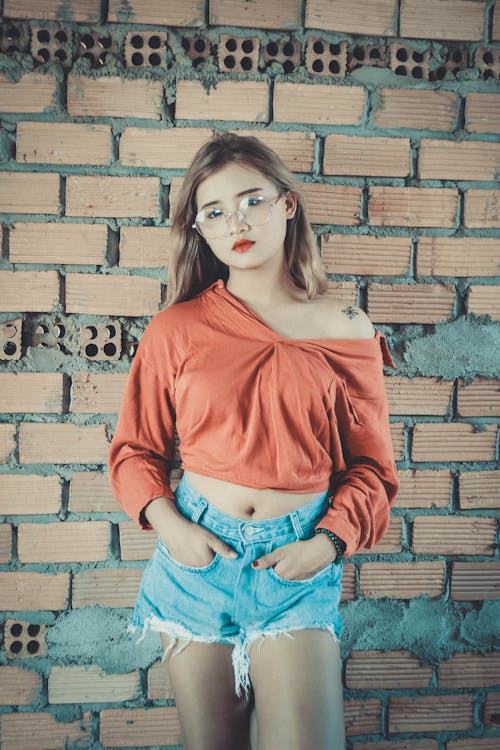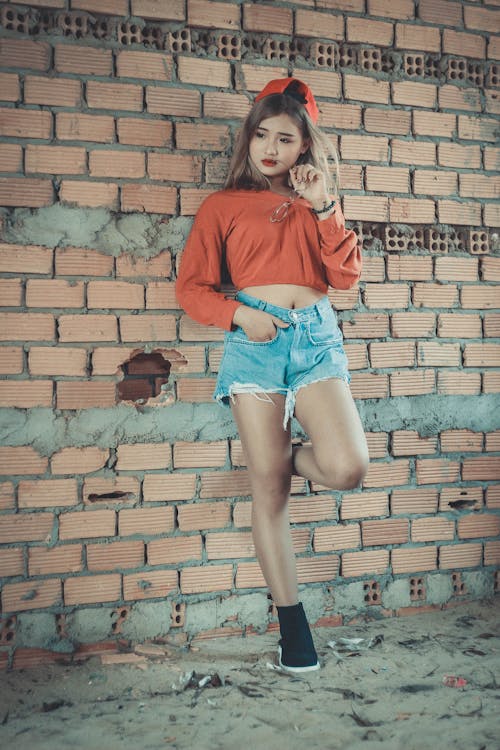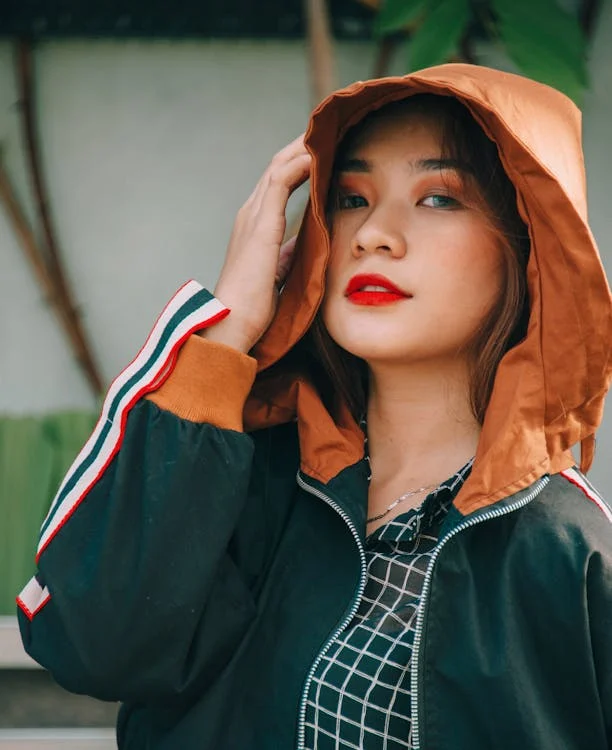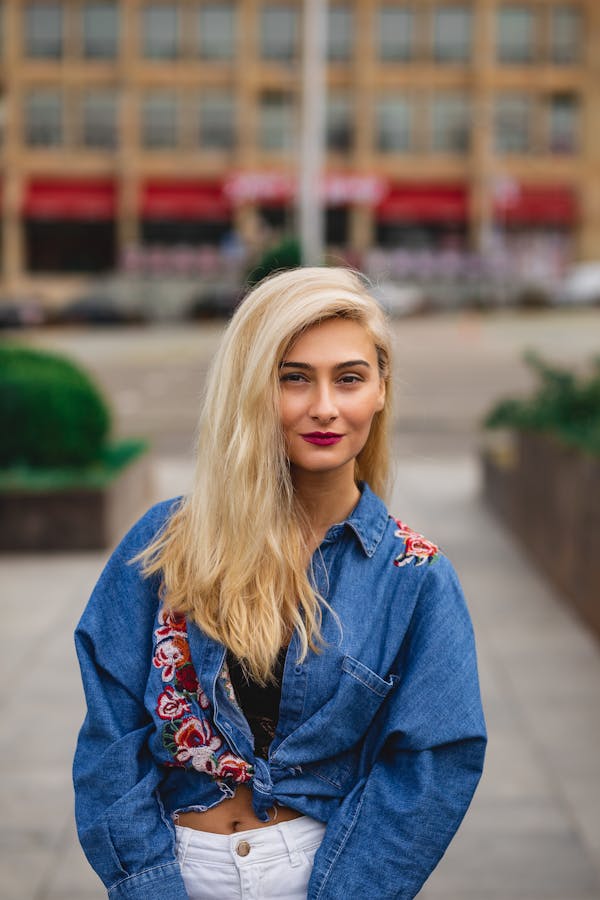The Evolution of Women’s Hip-Hop Fashion A Bold Expression of Power and Identity 2024

Hip-hop fashion has always been more than just a way to dress; it’s an art form, a means of communication, and a reflection of the culture that shapes it. For women, hip-hop fashion has been an avenue to assert individuality, defy norms, and, most importantly, express power in an industry and society that often tries to limit their voices. From the early days of the genre to the present, women in hip-hop have continuously redefined fashion, using their clothing choices as an extension of their music, personalities, and resistance.
Thank you for reading this post, don't forget to subscribe!
1. The Birth of Hip-Hop Fashion (Late 1970s to Early 1980s)
Hip-hop originated in the Bronx in the 1970s, and the streets largely influenced the fashion scene during this time. While the genre was developing, women’s hip-hop fashion was characterized by a mix of functionality and flair. It was all about expressing yourself while remaining rooted in the environment from which the culture was born.
Early Pioneers: In the early years, female artists like Roxanne Shanté and MC Lyte set the stage for women’s hip-hop fashion. They are dressed in oversized jackets, bold gold jewelry, and sneakers, mirroring their male counterparts while adding femininity elements. Their style was a reflection of the gritty urban landscapes of New York City. Hip-hop fashion at the time was about blending comfort with confidence, an armor of oversized clothing that represented strength and resilience.
Women in this era often wore tracksuits, Kangol hats, and heavy gold chains, borrowing from the male-dominated streetwear trends of the time but making them their own with touches like large hoop earrings or bold makeup. It was a time when fashion was practical—baggy clothes allowed for unrestricted movement in breakdancing or performances, but it was also subversive, allowing women to step away from the stereotypically feminine forms of dress.
2. 1990s: The Golden Era and the Rise of Glamour
The 1990s are often referred to as the “Golden Era” of hip-hop, and fashion during this time became more polished, while still retaining its street influence. Hip-hop had entered the mainstream, and female artists like Queen Latifah, Salt-N-Pepa, and Missy Elliott became fashion icons in their own right.
Queen Latifah and Afrocentric Fashion: Queen Latifah, a pioneer in both music and fashion, used her clothing to make bold political statements. Embracing Afrocentric style, she frequently wore African-inspired head wraps, colorful prints, and flowing garments that celebrated her heritage. Her look was both regal and rebellious, challenging conventional Western beauty standards and empowering black women to embrace their natural beauty and culture. Latifah’s style was sophisticated but still connected to the hip-hop ethos of self-expression.
Salt-N-Pepa and the Feminine Twist: Salt-N-Pepa brought a playful and daring element to women’s hip-hop fashion. With their iconic asymmetrical haircuts, leather jackets, and body-hugging outfits, they showcased a more overtly feminine look that was also strong and unapologetic. The duo often wore bold, bright colors, tight spandex, and crop tops, creating a fusion of streetwear and glam. They epitomized the fun and freedom of the era, signaling that women in hip-hop could be fashionable, feminine, and fierce without compromising their artistic integrity.
Aaliyah and the Tomboy Aesthetic: One of the most iconic figures of 1990s hip-hop fashion was Aaliyah, who blended tomboy sensibility with sex appeal. She popularized the combination of baggy jeans, oversized shirts, and crop tops, a look that allowed her to retain a sense of modesty while still appearing effortlessly sexy. Her style was unique because it was androgynous, straddling the line between traditionally masculine and feminine fashion, and it heavily influenced the next generation of female artists.
3. Early 2000s: Bling, Luxury, and the Rise of the Diva

As hip-hop continued to dominate the music industry in the 2000s, fashion became more extravagant, and the influence of luxury brands grew. Female hip-hop artists embraced high-end fashion in a way that hadn’t been seen before. This era was defined by excess—blinged-out jewelry, designer labels, and over-the-top outfits.
Lil’ Kim: The Queen of Extravagance: Perhaps no one embodies the fashion of the early 2000s more than Lil’ Kim. Her style was a mix of high fashion and risqué attire, breaking boundaries in both music and fashion. She became known for her bold and often scandalous red carpet looks, such as the infamous purple pasty outfit she wore to the 1999 MTV Video Music Awards. Lil’ Kim used her clothing to provoke, challenge norms, and assert her independence. Her love for luxury brands like Chanel, Versace, and Fendi signaled a shift in hip-hop fashion from streetwear to high fashion.
Lil’ Kim’s style was unapologetically feminine, sexual, and bold, inspiring countless women in both music and fashion. She created a space for women in hip-hop to embrace their sexuality without fear of judgment, reclaiming their bodies and their power.
Eve: A Blend of Glamour and Edge: Another fashion icon of the 2000s was Eve, known for her blend of street edge and high-fashion glamour. With her signature paw-print tattoos, Eve embraced her tough, Philly-born roots while also donning glamorous gowns and designer pieces. Eve, like many women during this time, showed that you could be both glamorous and “hood” simultaneously, breaking down the binary between the two.
Missy Elliott: The Innovator: Missy Elliott continued to push boundaries with her avant-garde fashion sense. Known for her outlandish, futuristic outfits, Missy used her clothing as an extension of her music videos and performances. Her iconic inflatable garbage bag suit from the “Supa Dupa Fly” video remains one of the most memorable fashion moments in hip-hop. Missy’s style was inventive, playful, and bold, showcasing that fashion in hip-hop could be experimental and still authentic.
4. The 2010s to Today: Empowerment, High Fashion, and Global Influence

In the 2010s, hip-hop fashion continued to evolve, and women in hip-hop became even more influential in mainstream fashion. This era saw a blending of streetwear with high fashion, as well as an increased focus on body positivity and personal empowerment.
Nicki Minaj: The Harajuku Barbie: Nicki Minaj exploded onto the hip-hop scene with a look that was as bold and colorful as her personality. She became known for her “Harajuku Barbie” persona, which mixed elements of Japanese street fashion with over-the-top wigs, bold colors, and provocative outfits. Nicki’s style is a fusion of various influences, from the pop-art aesthetics of Andy Warhol to the extravagant costumes of drag queens. Her fashion choices have always been about pushing the envelope, blurring the lines between costume and high fashion.
Nicki’s use of fashion as performance art reflects a broader trend in hip-hop, where female artists use their clothing to craft personas that are larger than life. In many ways, she took what Lil’ Kim started in the 90s and amplified it, pushing the boundaries of how far a female hip-hop artist could go in terms of visual and aesthetic expression.
Cardi B: From the Bronx to Balenciaga: Cardi B’s rise to fame has also been marked by her fashion evolution. Starting with her days as a Bronx stripper and reality TV star, Cardi’s style was rooted in urban streetwear. However, as her career took off, she began to embrace high fashion, working with major designers like Balenciaga, Mugler, and Christian Siriano. Cardi has used fashion as a way to showcase her journey from the streets to stardom, blending high-end couture with her down-to-earth, relatable persona.
What sets Cardi apart is her ability to wear high-fashion labels while still maintaining her connection to her roots. Whether she’s in a $20,000 gown or a tracksuit, Cardi’s style is always authentic to who she is—a reflection of her no-nonsense personality and her rags-to-riches story.
Megan Thee Stallion and Body Positivity: Megan Thee Stallion represents a new era of hip-hop fashion that is all about empowerment and body positivity. Known for her curvaceous figure, Megan often wears outfits that celebrate her body, from skin-tight dresses to bikinis. Her style is unapologetic, reinforcing the message in her music: women can be strong, sexy, and in control of their bodies. Megan’s fashion choices have inspired a new generation of women to embrace their bodies, regardless of shape or size, and to wear what makes them feel powerful.
The Influence of Social Media and Global Fashion: In recent years, social media has played a huge role in shaping women’s hip-hop fashion. Platforms like Instagram have allowed artists to showcase their style on a daily basis, blurring the lines between performance and everyday life. Female hip-hop artists are now influencers in the truest sense, impacting not just music and fashion but also beauty standards and cultural trends globally.
Today, hip-hop fashion is more diverse than ever, with influences from around the world. From the rise of streetwear brands like Off-White and Yeezy to the increasing presence of hip-hop artists at events like the Met Gala, women in hip-hop are now at the forefront of both street and high fashion.
5. Conclusion: Fashion as Power and Rebellion
Women in hip-hop fashion have continually used their clothing as a tool for self-expression, empowerment, and resistance. From the oversized jackets and
